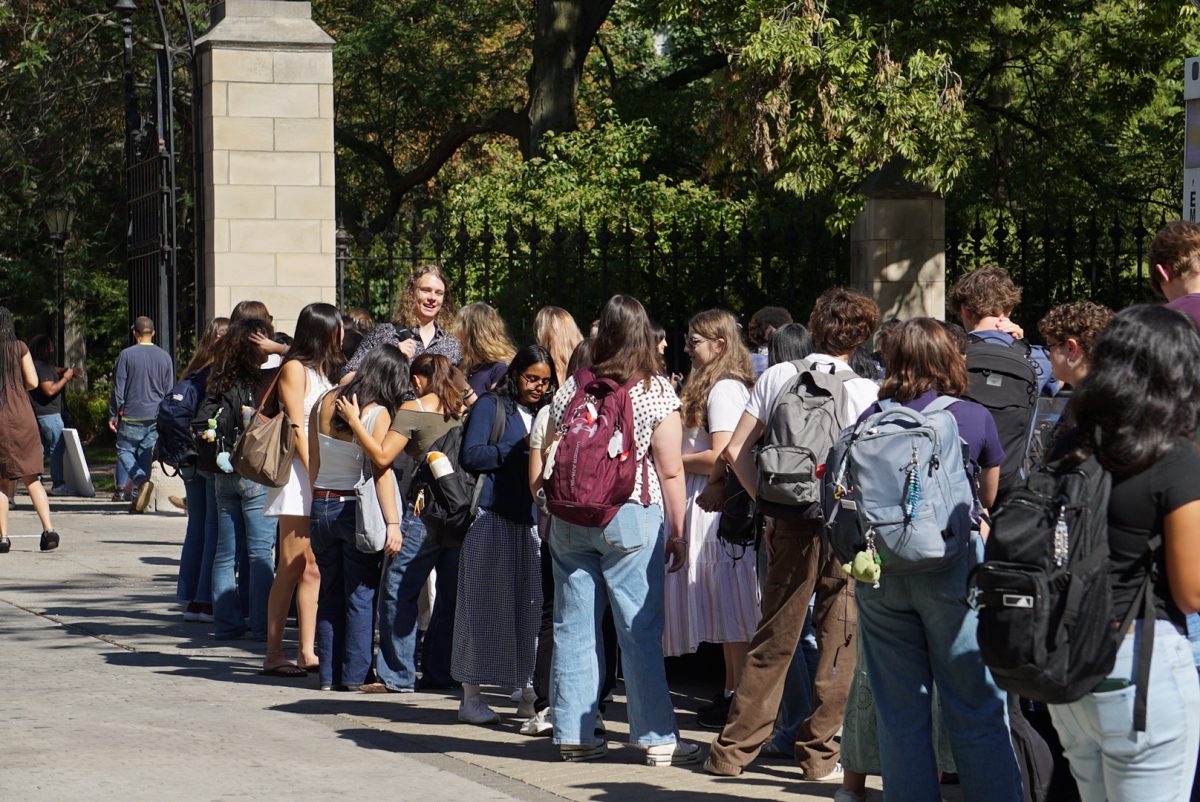U of C students had their own role to play in the recent potential discovery of the Higgs boson particle, a revolutionary breakthrough which could help explain how matter obtains its mass.
On July 4, researchers at the European Organization for Nuclear Research (CERN) announced that they observed something with many properties of the particle in the course of working on ATLAS, a particle physics experiment involving institutions from 39 countries.
The U of C ATLAS group specifically contributed to the creation, assembly, and installation of the Tile Calorimeter. In this case, the calorimeter measured the energy and position of the quarks and gluons produced by the proton collisions in the world’s largest particle accelerator, the Large Hadron Collider (LHC), in Geneva, Switzerland.
While some College students helped assemble the calorimeter at the Enrico Fermi Institute on campus, others spent time in Geneva testing and analyzing results, according to James Pilcher, physics professor and one of six faculty leaders of the group. Since 2005, alumni of the College have had the opportunity to work at CERN for a year at a time, developing various software programs for the calorimeter.
Joshua Montgomery (BS ’11), recently returned from a year at CERN writing and developing software that analyzes the charge injection system, turning what he calls arbitrary “data clicks” from the detector into units that physicists can use. Although Montgomery will be starting a Ph.D. program in experimental cosmology rather than particle physics, his year in Geneva was worthwhile.
“This opportunity was a great experience to try something new for a year as well as strengthen my programming skills,” Montgomery said. “But the world of particle physics is extremely intimidating in a couple ways, not the least of which is being a part of a collaboration that has several thousand members.”
This summer, Nicholas Dulchinos (BS ’12) and Noah Wasserman (BS ’12), have just begun their yearlong experience at CERN working on the ATLAS detector. Their job consists of monitoring and, if necessary, recalibrating the calorimeter in order to eliminate error or faulty data given by the detector
“Being part of such an enormous collaboration, I thought that perhaps it would be hard to keep the big picture of my work in mind,” Wasserman wrote in an e-mail. “On the contrary, the passion and commitment that the myriad of people you interact with put into their work always lets you know that everyone here is important, even if not directly performing groundbreaking research.”
A professor in the physical sciences and one of the ATLAS group’s head researchers, Mel Shochet, feels that this opportunity benefits the grads and undergrads who participate, no matter what field they choose.
“This training, learning how to analyze and collect data to solve a problem, can be applied to any area of science and, I would say, areas beyond science,” Shochet said.
Plans to double the amount of energy put into the LHC in 2013 have the potential to produce things not yet seen by CERN researchers, according to Pilcher, which will benefit U of C grads and undergrads. “Chicago’s well positioned in this,” said Pilcher. “We’re playing, I’d say, leadership roles in the experiment and I think our students are excited to be involved in this experiment. It’s an exciting time.”








